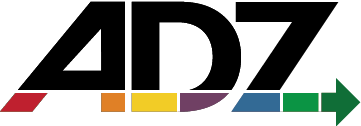Organization Timeline in Months
The Organization Holon refers to a suite of products or technological capabilities owned by a given organization. Many small to medium businesses have one portfolio, where many large enterprises have the difficult task of coordinating more than a dozen portfolios, with upstream and downstream impacts/dependencies to manage. Maintaining internal alignment with the Enterprise Vision, while externally aligning with other portfolios is one of the greatest challenges we face today and requires excellent coordination and collaboration.
- Values & Goals
- Clear Portfolio vision
- Accountability to my team
- Agile mindset
- Willing to learn & grow
- Flexibility
- Committed to vision
- Attention to results
- Customer focused
- Adaptable
- Accountable, responsible
- Environmental Responsibility
- Product & Impact
- Define portfolio offering
- Annual OKRs
- Prioritized healthy backlog
- Product feedback loops
- Marketing plans
- Training plans
- Leadership working agreement
- Predictable delivery
- Roadmaps
- Leadership & Culture
- Portfolio Values & Culture
- Shared vision/goals
- Market Perception
- Trust, transparency & safety
- Servant leadership culture
- Conscious Leadership culture
- Continuous improvement culture
- Listen to all perspectives
- Clear communication of goals
- Top to bottom and back collaboration
- Strong LPM team
- Development of future leaders
- Sense & Respond culture
- Markets & Environment
- Systems
- Value Streams
- Roles & Responsibilities
- Effective Agile process
- Effective architecture
- Collaboration space
- Collaboration tools
- Effective Business processes
- Sales pipeline
- Sufficient funding
- Portfolio structure
- Aligned incentive structure
Product Coordination (once per sprint)
 This session replaces the traditional status update around product delivery with something that is more centered on coordinating how to respond to new challenges and opportunities. Over the course of delivering any product, older ideas may no longer be as relevant, and anyone who has ever worked on delivering a product to the market has been frustrated by how to handle the discovery of new work. In addition to surfacing and removing impediments, establishing an objective means to prioritize new work against existing without blowing your capacity budget or burning out your teams is the key objective for this session. Progress towards goals should be measured inside an established, transparent Agile process, and does not require special reporting.
This session replaces the traditional status update around product delivery with something that is more centered on coordinating how to respond to new challenges and opportunities. Over the course of delivering any product, older ideas may no longer be as relevant, and anyone who has ever worked on delivering a product to the market has been frustrated by how to handle the discovery of new work. In addition to surfacing and removing impediments, establishing an objective means to prioritize new work against existing without blowing your capacity budget or burning out your teams is the key objective for this session. Progress towards goals should be measured inside an established, transparent Agile process, and does not require special reporting.
- Values & Goals
- Commitment to improvement
- Servant leader mindset
- Proactive, not reactive
- Value focused
- THINK, DECIDE, COMMIT
- Product & Impact
- Portfolio Kanban
- Raise impediments
- Raise discovered work with context
- How are my teams doing?
- What is our plan moving forward? (Leadership guidance)
- Release burn up per ToT & overall
- Update leadership Kanban board
- Leadership & Culture
- Coordination
- Provide updates
- Focus on root causes
- Trust & safety
- Taking things offline
- Ask for help
- Accountable & responsible
- Markets & Environment
- Impediment resolution
- Product governance
Annual Lean Portfolio Management
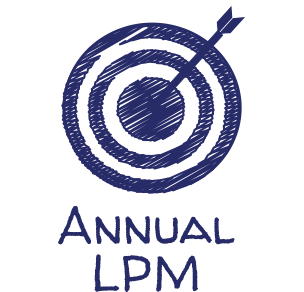 This session defines the portfolio strategy for the year - what is the impact we want to have on the world, and how can we continue to evolve our culture? This session will differ depending on whether you are a small to medium business or a large enterprise with multiple technology and business portfolios.
This session defines the portfolio strategy for the year - what is the impact we want to have on the world, and how can we continue to evolve our culture? This session will differ depending on whether you are a small to medium business or a large enterprise with multiple technology and business portfolios.
Small - Medium Business
The first order of business will be to define both the Long Term (3+ year) and annual objectives (or OKRs). Once these objectives are set, conversations about investment, allocation, and everything else necessary to meet those objectives can effectively take place.
Enterprise
In a large enterprise, the goal will be to align annual objectives with the Long Term objectives set by the enterprise as a whole. It is also critical for each portfolio to align with each other to ensure everyone is pulling in the same direction.
- Values & Goals
- Long term vision (3+ years)
- Annual Vision
- Portfolio purpose
- Innovation mindset
- Willing to take risks
- Continuous improvement
- Product & Impact
- Define 1year OKRs
- Define 3year OKRs
- Training plan
- Pro Forma Income statement (P&L)
- Define initiatives
- New product approval
- Update Customer Journeys & Experience
- Portfolio Kanban Board
- Leadership & Culture
- Assess portfolio culture
- Leader development
- Feedback from employees
- Open channels of communication
- Top to bottom alignment of purpose/vision
- Customer relationships
- Sense & Response culture
- Celebration of successes
- Markets & Environment
- Lean Budgeting (CapEX OPEX)
- Reorganize teams to enable optimal flow
- Update value stream map if necessary
- Hiring/talent acquisition
- Systems/equipment/real estate procurement/dissolution
- Promotions
- Understand market conditions
- Define Run, Grow, Transform %
- Target markets
Quarterly Lean Portfolio Management
 Quarterly LPM sessions are designed to get feedback from leading and lagging indicators set by the annual objectives. The quality and speed of the response to new information will be a key differentiator in competitive advantage, both internally and externally. This includes but is not limited to: prioritizing new features, shifting capacity where its needed, changing people's experience at work, and any necessary team or cultural shifts to ensure alignment and maintain or improve morale.
Quarterly LPM sessions are designed to get feedback from leading and lagging indicators set by the annual objectives. The quality and speed of the response to new information will be a key differentiator in competitive advantage, both internally and externally. This includes but is not limited to: prioritizing new features, shifting capacity where its needed, changing people's experience at work, and any necessary team or cultural shifts to ensure alignment and maintain or improve morale.
- Values & Goals
- Vision for the quarter
- Aligned to purpose
- Innovation mindset
- Willing to take risks
- Continuous improvement
- Product & Impact
- Quarterly OKRs
- Define Features
- Prioritization
- Metrics
- Feedback loops
- Update roadmaps
- Benefits realization (QBR)
- SOWs
- Leadership & Culture
- Maintain or improve portfolio culture
- Leader development
- Feedback from employees
- Open channels of communication
- Top to bottom alignment of purpose/vision
- Markets & Environment
- Capacity plan
- Explore flow improvements
- Sequencing of ToT execution
- Hiring/talent acquisition
- Systems/equipment/real estate procurement/dissolution
- Promotions
- Understand market conditions
Retrospective (once a month)
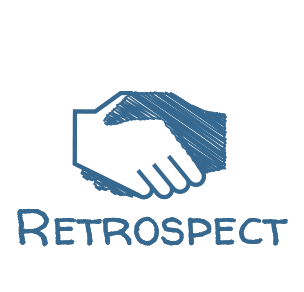 Retrospectives at this level are simultaneously focused on the health and success of the leadership team as well as the many people they both lead and impact. The creation of a continuous improvement culture starts with leaders leading by example, and uses the collective feedback from their colleagues to create the kind of working environment that enables people and the systems they work with to achieve their full potential.
Retrospectives at this level are simultaneously focused on the health and success of the leadership team as well as the many people they both lead and impact. The creation of a continuous improvement culture starts with leaders leading by example, and uses the collective feedback from their colleagues to create the kind of working environment that enables people and the systems they work with to achieve their full potential.
- Values & Goals
- How do I feel about how we're doing?
- Individual accountability
- What can I do differently?
- Am I aligned to the vision?
- Open, humble mindset
- Value/impact focus
- Product & Impact
- What's going well?
- What's not going well?
- How is delivery going?
- Measurement of growth item impact
- Leadership & Culture
- Ask for help
- How can we improve?
- Open and honest intent
- Celebration of successes
- How are we perceived as leaders?
- Markets & Environment
- Growth Item backlog to improve/respond
- Portfolio acknowledgement/celebration
Process Governance (once a month)
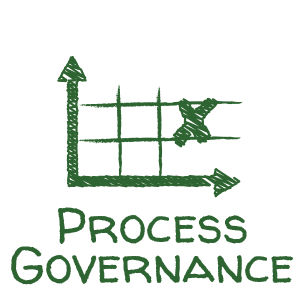 Ok, let's change the tone here… has anyone in any role had a look at current processes and thought to themselves: "This is amazing! This is the most efficient and pleasurable, combination of process and tooling that strikes the perfect balance between clarity and accuracy of information, and ease of communicating and formatting said information? No, no one has ever said that sequence of words in any working environment. Process governance is all about taking an informed guess as to what will best suit a transparent, collaborative and accountable working environment, and tuning the process and tooling based on feedback from every role in your organization.
Ok, let's change the tone here… has anyone in any role had a look at current processes and thought to themselves: "This is amazing! This is the most efficient and pleasurable, combination of process and tooling that strikes the perfect balance between clarity and accuracy of information, and ease of communicating and formatting said information? No, no one has ever said that sequence of words in any working environment. Process governance is all about taking an informed guess as to what will best suit a transparent, collaborative and accountable working environment, and tuning the process and tooling based on feedback from every role in your organization.
- Values & Goals
- Process objective
- Alignment to Vision/Future Search
- Subject matter expertise
- Focus on simplicity
- Focus on value add
- MVC (Minimal Viable Change)
- Systems thinking (avoid silos)
- Focus on enabling flow
- Product & Impact
- Choice of tooling
- Training sessions
- Test/Pilot new processes
- Work progress metrics
- Team health/productivity metrics
- Score cards
- Leadership & Culture
- Consult, coach, train & mentor
- Understand company cultural goals & values
- Support team's success
- Continuous improvement
- Take and respond to feedback
- Empowerment
- Celebration of successes
- Knowledge Sharing (succession plans)
- Markets & Environment
- Establish processes & systems
- Establish best practices
- Deploy process experts to instruct (coach)
- Focus on enabling flow
- Make impediments & dependencies easier to navigate (impact of problems)
- Establish guard rails
- Allow for flexibility in the process
- Development value streams to reduce waste
- Design follows needs
- Enable Quality
- MVC Journey
Systems Governance (once a month)
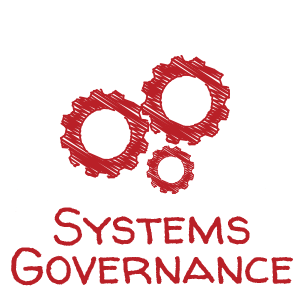 Balancing the immediate needs of the business with new capabilities that will be needed in the future with emergent technological advances while staying focused on delivery deadlines is quite the tightrope to walk. The purpose of this session is to define the architectural runway for the portfolio as a whole while taking in feedback from the teams to refine the strategy based on its application. Choosing and adapting the best technologies to enable the optimal flow of value requires an emergent, flexible design structure.
Balancing the immediate needs of the business with new capabilities that will be needed in the future with emergent technological advances while staying focused on delivery deadlines is quite the tightrope to walk. The purpose of this session is to define the architectural runway for the portfolio as a whole while taking in feedback from the teams to refine the strategy based on its application. Choosing and adapting the best technologies to enable the optimal flow of value requires an emergent, flexible design structure.
- Values & Goals
- Alignment to Vision/Future Search
- Subject matter expertise
- Focus on simplicity
- Focus on value add
- Customer centricity
- Product & Impact
- Architectural runway
- Choice of technology
- Systems training
- Pilot new ideas (POC)
- Reporting (outcomes)
- Reporting (systems)
- Leadership & Culture
- Train & mentor
- Understand company culture
- Support team's success
- Continuous improvement
- Take and respond to feedback
- Markets & Environment
- Reference architectures (best practices)
- Avoid silos
- Establish guard rails
- Allow for flexibility in design (emergent)
- Focus on enabling flow
- Deploy system experts to instruct (coach)
- Central document repository
- Design follows needs
- Appropriate robustness & performance
Envisioning & Elaborating Initiatives (DoR)
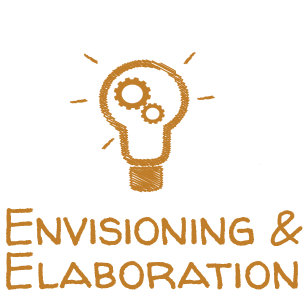 This process typically kicks off in earnest after annual objectives are set, and there’s a clear idea about the overall strategy for the upcoming year. After the list of ideas has been trimmed to a set that will fit into the known budget/capacity, initiative owners, their business teams, and their technology partners can get to work elaborating the solution. This often involves multiple design sessions, rapid prototyping to get early feedback, the testing of new technologies, establishing your key feature set (MVP), and the creation of a loose roadmap with an impact analysis. The objective is to bring the initiative to an established Definition of READY, where there’s general comfort and consensus around the value to be delivered, who needs to be involved, and the relative effort.
This process typically kicks off in earnest after annual objectives are set, and there’s a clear idea about the overall strategy for the upcoming year. After the list of ideas has been trimmed to a set that will fit into the known budget/capacity, initiative owners, their business teams, and their technology partners can get to work elaborating the solution. This often involves multiple design sessions, rapid prototyping to get early feedback, the testing of new technologies, establishing your key feature set (MVP), and the creation of a loose roadmap with an impact analysis. The objective is to bring the initiative to an established Definition of READY, where there’s general comfort and consensus around the value to be delivered, who needs to be involved, and the relative effort.
- Values & Goals
- Vision for the portfolio
- Empowered product team
- Commitment to improvement
- Properly skilled and resourced
- Proactive, not reactive
- Value focused
- THINK, DECIDE, COMMIT
- Focus on Objectives
- ROI focused
- Lean MVP mindset
- Product & Impact
- ROI
- Business case
- Prioritization
- Engaged Portfolio Owner
- Roadmap
- Create shell features
- Pricing strategy
- Portfolio Kanban
- Create personas
- Success criteria
- Pirate metrics (ARRRR)
- Leadership & Culture
- Aligned to portfolio vision
- Meaningful to the product team
- Product & tech perspectives
- Coordination
- Trust & safety
- Ask for help
- Accountable & responsible
- Connected with the customer
- Markets & Environment
- Performance ranges
- Market conditions
- External & Internal competitive analysis
- Marketing strategy
- Sales strategy
- Legal & Compliance
- Architectural/Systemic needs
- Dependency mitigation
- Improve refinement practice plan
- Establish training where necessary
- Explore possible need for technical uplift
- Impediment resolution



